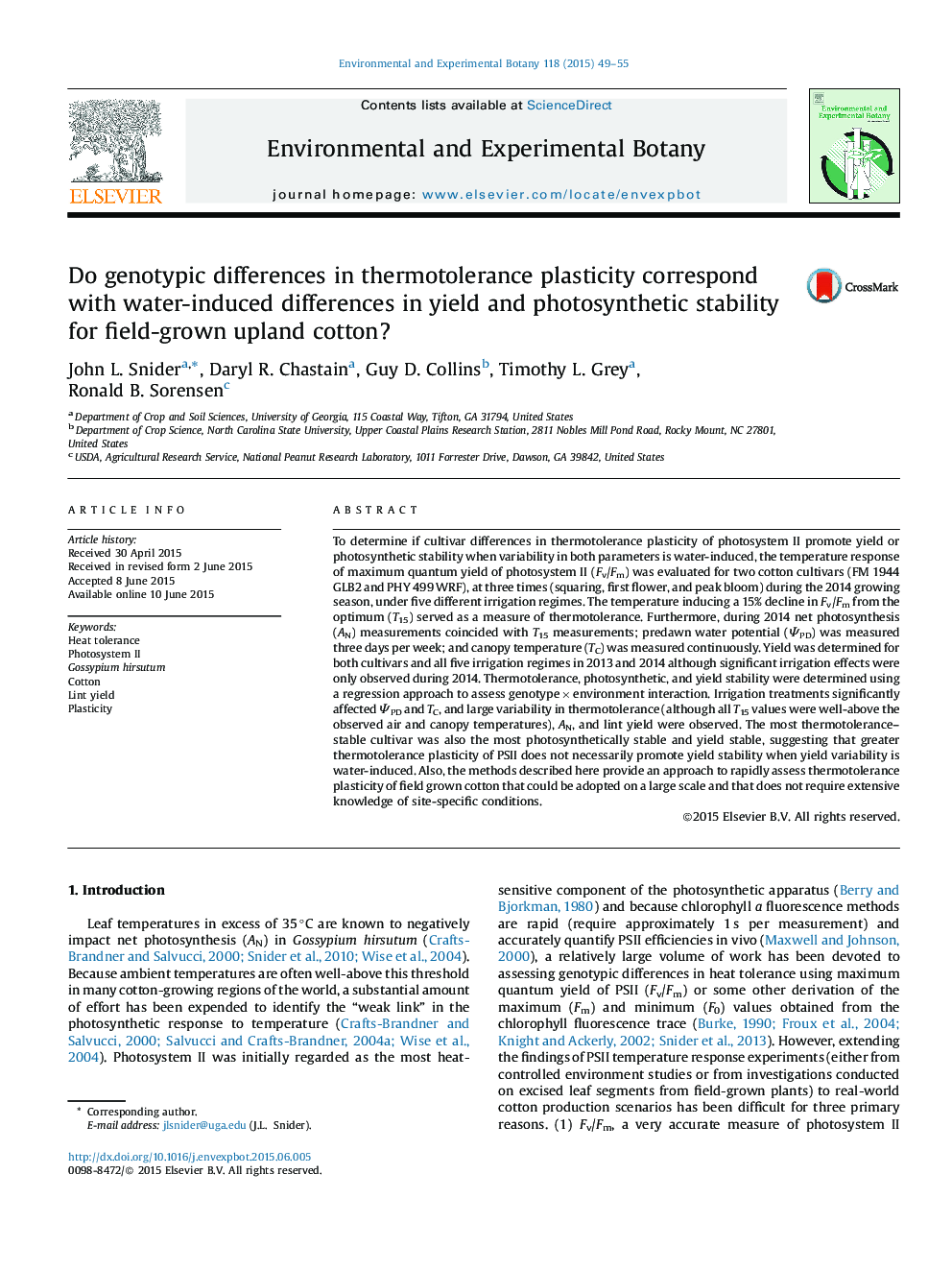| کد مقاله | کد نشریه | سال انتشار | مقاله انگلیسی | نسخه تمام متن |
|---|---|---|---|---|
| 4554207 | 1628059 | 2015 | 7 صفحه PDF | دانلود رایگان |
• Yield stability is associated with heat tolerance stability under water deficit.
• A novel method is described for assessing thermotolerance stability in the field.
• Simultaneous screening for thermotolerance and yield stability may be possible.
To determine if cultivar differences in thermotolerance plasticity of photosystem II promote yield or photosynthetic stability when variability in both parameters is water-induced, the temperature response of maximum quantum yield of photosystem II (Fv/Fm) was evaluated for two cotton cultivars (FM 1944 GLB2 and PHY 499 WRF), at three times (squaring, first flower, and peak bloom) during the 2014 growing season, under five different irrigation regimes. The temperature inducing a 15% decline in Fv/Fm from the optimum (T15) served as a measure of thermotolerance. Furthermore, during 2014 net photosynthesis (AN) measurements coincided with T15 measurements; predawn water potential (ΨPD) was measured three days per week; and canopy temperature (TC) was measured continuously. Yield was determined for both cultivars and all five irrigation regimes in 2013 and 2014 although significant irrigation effects were only observed during 2014. Thermotolerance, photosynthetic, and yield stability were determined using a regression approach to assess genotype × environment interaction. Irrigation treatments significantly affected ΨPD and TC, and large variability in thermotolerance (although all T15 values were well-above the observed air and canopy temperatures), AN, and lint yield were observed. The most thermotolerance–stable cultivar was also the most photosynthetically stable and yield stable, suggesting that greater thermotolerance plasticity of PSII does not necessarily promote yield stability when yield variability is water-induced. Also, the methods described here provide an approach to rapidly assess thermotolerance plasticity of field grown cotton that could be adopted on a large scale and that does not require extensive knowledge of site-specific conditions.
Journal: Environmental and Experimental Botany - Volume 118, October 2015, Pages 49–55
